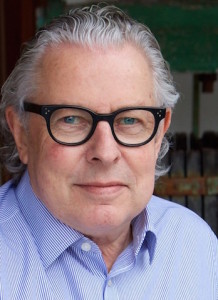
New Zealanders will sooner rather than later find the range of new mainstream petrol and diesel passenger cars is shrinking as carmakers ramp up production of plug-in hybrids (PHEVs) and battery-electric vehicles (EVs).
It won’t necessarily be because global demand for such EVs has overnight gone through the roof, but environmental lawmakers in the European Union will have put in place emission limits that carmakers can’t hope to match.
New Zealanders will thereafter pretty much get what they’re given. In 2015, the EU set a cap on exhaust pollution from passenger cars of 130 grams of CO2 per kilometre. This year they began phasing in the 2021 limit: 95gr/km.
“Within the next few years it will drop to around 75gr/km, and there’s no way a fossil-fuelled car is going to meet those guidelines,” says Mark Gilbert, chairman of EV lobby group DriveElectric.

Gilbert, the former managing director of BMW New Zealand, says this country’s choice of new cars will from then on largely be governed by what carmakers build for the two biggest right-hand drive markets: the United Kingdom and Japan.
“The jury’s out whether those countries go battery-electric or fuel cell electric, but it’s quite clear that all the European carmakers at least – the Volkswagen Group, BMW, Mercedes-Benz, Renault-Nissan, Peugeot-Citroen – are talking electric,” he says.
“Given that no one builds cars specifically for Australia and New Zealand anymore, we have to lock in and customise our offering based on what is been offered in those bigger markets.”
The UK last year set 2035 as the year new fossil-fuelled cars and petrol-powered hybrids would be outlawed. Now Prime Minister Boris Johnson’s transport ministry wants a 2032 deadline.
“So when Boris says 2032 and no more new fossil-fuelled or hybrid vehicles – and that’s petrol-powered hybrids, not plug-ins – on UK roads, that effectively puts a nail in the coffin of fossil-fuelled vehicles, unless something changes between now and then,” says Gilbert.
New Zealand, he says, needs to educate people about the benefits of EVs. “You don’t want to wake up in 2030 and find the value of your fossil-fuelled car is going to erode quite drastically after Boris does what he’s going to do.
“The more we can educate people means that it won’t be a big surprise. There are a lot of myths and innuendo about costs and things like that and every year we are getting closer to parity and crossover (with conventional vehicles).
“We need to start the conversation in a mature way. It means don’t talk about dates, don’t talk about numbers, don’t talk about all the things that will have to happen.”
Gilbert relates the inevitable switch to EVs to the time in the 1980s and ‘90s when New Zealand shut down the plants that assembled nearly all of the country’s new cars from parts shipped in from overseas factories.
“Everyone could see it coming (plants closing) but no one wanted it to happen. But it happened because a plan was put in place. It was extensively discussed with industry and all those effected. We’ve got to apply the same approach,” he says.
- There are just over 22,000 PHEVs and EVs registered in New Zealand, according to the latest Government figures. The latest significant EV development is the installation by ChargeNet NZ of two 300kW hyperchargers at the end of Auckland’s Southern Motorway. The company will install a further seven such units at four locations in the North and South Islands. “Despite the fact, there’s no EV on the New Zealand market capable of charging at 300kW, ChargeNet is preparing for a future when more vehicles can handle higher levels of power”, said Steve West, company CEO. The first car compatible car with the hyperchargers will be the upcoming Porsche Taycan.
